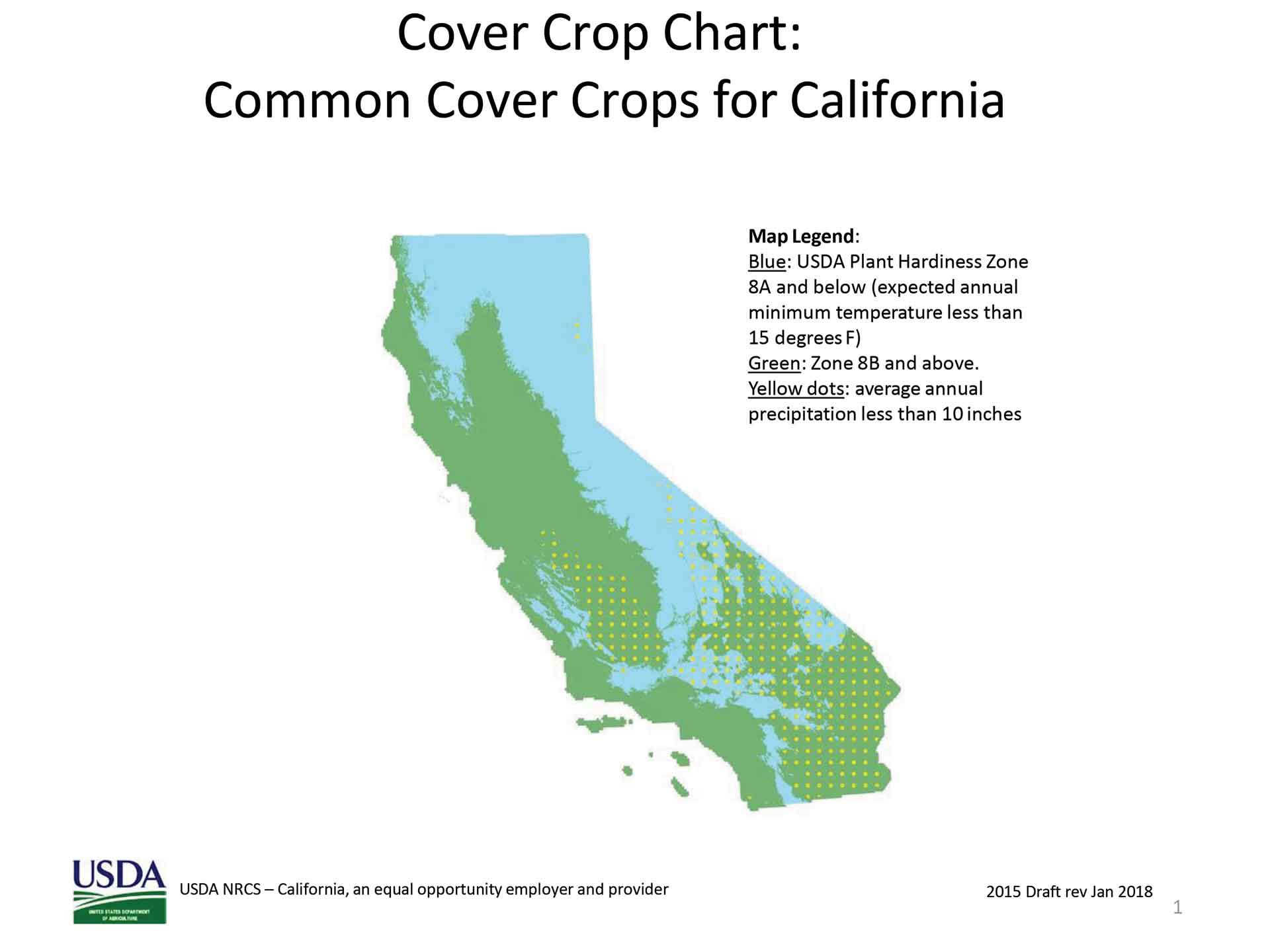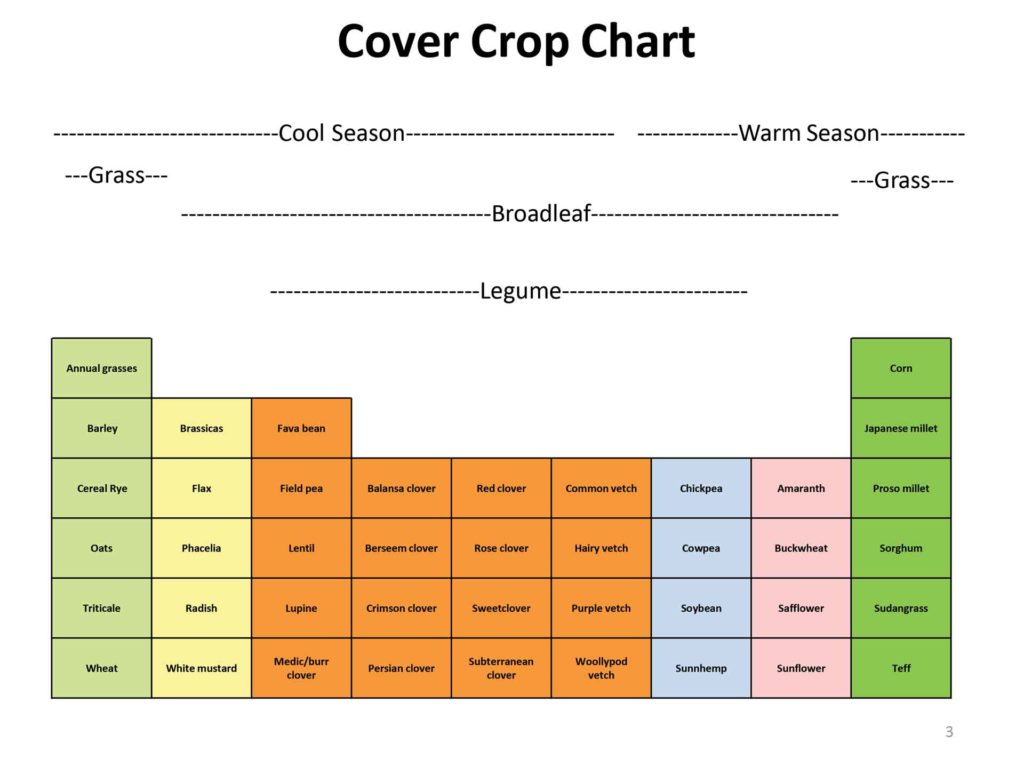Whether your goal in planting a cover crop is to achieve improved water infiltration, better orchard access or even to attract native pollinators, research has shown many benefits in large and small-scale almond production.
Benefits of cover crops, report University of California Cooperative Extension (UCCE) advisors, include improved soil structure, nutrient cycling, and a boost in microbial activity. Cover crops can also outcompete weeds for sunlight. Now is the time, they add, to plan for fall cover crop planting.
Different species have different tolerances for drought, heavy soils, flooding and cold. The advantage of planting multiple species helps ensure that at least one will thrive and produce the desired results.
When it comes to seed selection, it is important to know your main goals for the cover crop and to know your orchard’s specific needs. Water use, soil type and availability of tillage and seeding equipment are all considerations to be included in the selection. A tool to assist with seed selection is the Natural Resources Conservation Service (NRCS) eVEgGuide, which can narrow down options based on orchard location.
To ensure good establishment of the cover crop, light soil preparation may be necessary if this is the first planted cover crop. A good resource for the right equipment for soil prep and seeding in an orchard is CalAg Solutions http://www.calagsolutions.com).
Budgeting for the seed species prices and availability is also important There are programs to help grower reduce cover crops costs. One program is Seed for Bees: http://www.projectapism.org/seeds-for-bees-home.html).
One of the primary concerns of almond growers considering cover crops is the residue left at harvest time. The amount will be determined by management decisions made in the spring and summer including when to terminate the crop, the number of times if will be mowed and if irrigation is possible to speed up decomposition of the biomass. The carbon to nitrogen ratio plays a part in the decomposition and that is controlled by the seed selection. The more nitrogen in the biomass, the faster it will break down and leave a clean floor by harvest time.
Regional cover crop trials are underway in Kern, Merced and Glenn counties to both improve soil health and water penetration in nut orchards. In the Kern County trial, UCCE orchard systems advisor Mohammad Yaghmour said the goal was to develop feasible and practical winter cover crop systems for almond growers, which maximize agronomic
benefits and reduce operational concerns. The cover crop trial began in October 2018 after harvest and had a successful growing season due to ample rainfall.
The two Kern seed mixes targeted soil improvement and pollinators. The soil mix included five species from three families at 50 pounds per acre. The species included 10 percent white mustard, 10 percent daikon, 30 percent Merced ryegrass, 20 percent berseem cover and 30 percent common vetch. The pollinator mix had five species at 8 pounds per acre. It included 15 percent white mustard, 20 percent daikon, 15 percent nemfix yellow mustard, 15 percent common yellow mustard and 35 percent canola.
The University of California cover crop research team is asking growers to participate in a survey about cover crop use. The survey is looking for grower needs and challenges and will be used to develop regional best management practices, guide further research and extension activities. The survey can be found at http://almondcovercrop.faculty.ucdavis.edu













